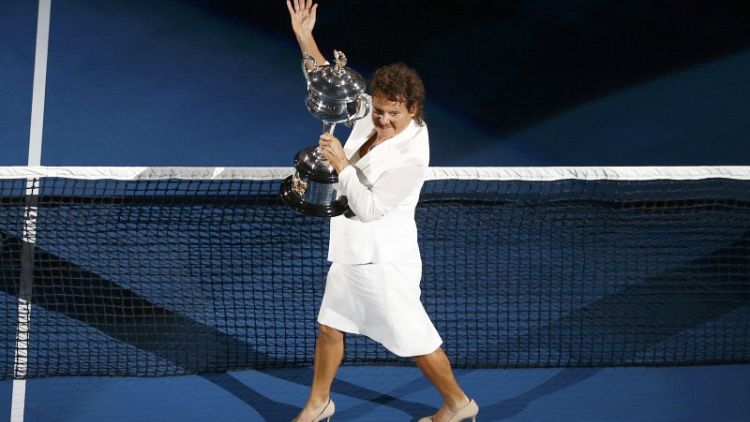By Ian Ransom
MELBOURNE (Reuters) - Nearly half a century after Evonne Goolagong-Cawley became the first Aboriginal Australian to win a grand slam title at the 1971 French Open, the nation still waits for another indigenous talent to emerge and claim the game's highest honours.
Aboriginal athletes have featured prominently in the narrative of Australian sport and regularly light up the country's top flight rugby league (NRL) and Australian Rules football (AFL) competitions.
Breaking into the big time of global tennis has proved a bigger obstacle, however, with world number 16 Ashleigh Barty the only indigenous player currently in the women's top 200.
The men's ATP tour has long been bereft of Aboriginals, with promising juniors failing to make an impression in the professional ranks.
Ian Goolagong, Goolagong-Cawley's younger brother, is the only Aboriginal man to have played at Wimbledon having made a mixed doubles appearance with his seven-times grand slam title-winning sister in 1982.
Goolagong-Cawley, whose foundation is a prominent sponsor of indigenous tennis, has no illusions about the challenge of producing champions from Australia's 650,000 Aboriginal and Torres Strait Islanders, a population comparable to Macau.
A lack of tennis infrastructure, particularly for remote communities spread across the vast interior, invariably means the first piece of sporting equipment grasped by an Aboriginal child is an oval football rather than a racquet.
"All you need is a ball to kick, even in the communities and so on," Goolagong-Cawley told Reuters in a telephone interview on Monday.
Goolagong-Cawley, however, believes that tennis can soon expect a dividend from investments that have been made in specialist programmes for a number of years.
"The more young indigenous kids we have playing the game, the more chance we'll have of finding a champion," she said.
"Now we've got a better chance, because Tennis Australia is creating more pathways for them."
A clutch of of indigenous juniors are making their way onto the feeder International Tennis Federation (ITF) circuit, including teenage siblings Corey and Krystal Clarke from Camden Haven in northern New South Wales state.
INDIGENOUS CARNIVAL
Tennis Australia hopes for a further boost from the inaugural National Indigenous Tennis Carnival in Darwin in September, which will bring together 180 of the community's top players from every state and territory for the first time.
"The need that this fills is that it rounds out the pathway that's been provided," Tennis NT chief executive Sam Gibson, who runs the game in the remote Northern Territory, told Reuters.
"You look at the AFL and the number of indigenous players playing there and being successful.
"We need to be able to harness that skill-set with tennis because that will create a lot more opportunities (for players) to attend grand slams and win grand slams."
Indigenous people continue to suffer disproportionately high rates of suicide, domestic violence and imprisonment in Australia, and track near the bottom in almost every economic and social indicator.
A recent government report said the nation was failing to meet more than half of its targets aimed at closing the gap between indigenous people and the mainstream, including increased life expectancy and improved literacy.
Goolagong-Cawley, however, believes there has been progress in making tennis more inclusive.
"When I started I was pretty well the only Aboriginal player who was playing tournaments," she added.
"And you go back further, Aboriginal people weren’t allowed in clubs. And so times have changed."
Raised with seven siblings in Barellan, New South Wales, Goolagong-Cawley said tennis glory might have passed her by if it had not been for the generosity of the people of the tiny country town.
"We couldn't afford anything. Suitcase, clothes, everything, Barellan people bought for me," she said.
"So I want to do what the townspeople did for me."
(Editing by Nick Mulvenney)
